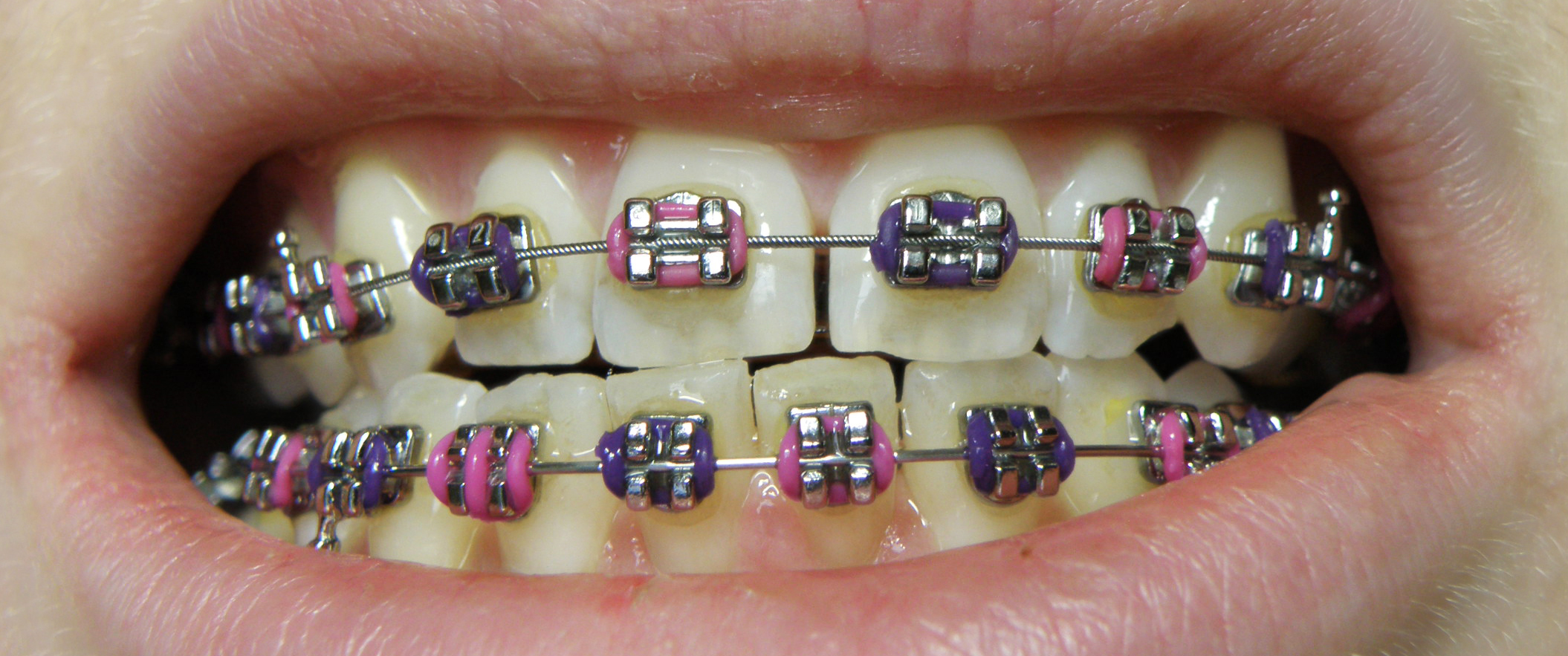Dental Braces
Who needs dental braces?
Dental braces are often recommended for individuals who have orthodontic issues that affect the alignment of their teeth and jaws. Some common reasons why someone might need dental braces include:
- Malocclusion: Malocclusion refers to misalignment of the teeth or incorrect relation between the teeth of the two dental arches. This can include issues such as overcrowding, spacing, overbite, underbite, crossbite, or open bite.
- Crooked or Misaligned Teeth: Braces can help straighten teeth that are crooked or misaligned, improving both the appearance and function of the teeth.
- Improper Jaw Position: Braces can help correct issues with the alignment of the jaws, such as when the upper and lower jaws do not meet properly (malocclusion).
- Overcrowding: Overcrowding occurs when there is insufficient space in the mouth for all the teeth to fit properly. Braces can help create space and align the teeth correctly.
- Spacing Issues: Braces can also be used to close gaps or spaces between teeth, known as diastema, which can occur due to missing teeth or natural spacing issues.
- Orthodontic Treatment for Children: Braces are often recommended for children and teenagers to correct orthodontic issues early, prevent future problems, and improve oral health.
- Orthodontic Treatment for Adults: Braces can also be used to correct orthodontic issues in adults, although the treatment may take longer and be more complex than in children.
Ultimately, the decision to get dental braces is based on the individual’s specific orthodontic needs and goals, as determined by a consultation with an orthodontist. Orthodontic treatment with braces can help improve the alignment of the teeth, enhance the smile, and promote better oral health in the long term.
How long will I have to wear dental braces?
The duration of time you will need to wear dental braces can vary widely depending on several factors, including the severity of your orthodontic issues, your age, and how well you follow your orthodontist’s instructions. On average, most people wear braces for 1 to 3 years, but some may need them for a shorter or longer period.
Here are some factors that can affect the duration of your treatment:
- Severity of the Orthodontic Issues: The more severe your orthodontic issues (such as overcrowding or misalignment), the longer it may take to correct them with braces.
- Age: Younger individuals may see faster results because their jaws are still growing, making it easier to move teeth into the desired position. Adults may require longer treatment times due to the maturity of their jawbones.
- Compliance: Following your orthodontist’s instructions, such as wearing rubber bands or appliances as directed, and keeping your braces clean can help speed up the treatment process.
- Type of Braces: The type of braces you choose can also affect treatment time. Traditional metal braces tend to be more effective at moving teeth quickly, while clear aligners may require longer treatment times.
- Retainers: After your braces are removed, you will likely need to wear retainers to maintain the results of your treatment. The length of time you need to wear retainers can vary.
It’s important to follow your orthodontist’s advice and attend all scheduled appointments to ensure that your treatment progresses as planned. Your orthodontist will be able to give you a more accurate estimate of how long you will need to wear braces based on your individual case.
What are the side effects of dental braces?
Dental braces, also known as orthodontic braces, are used to straighten and align teeth. While braces are generally safe and effective, they can cause some side effects. Common side effects of dental braces may include:
- Discomfort: It is common to experience some discomfort or soreness in the teeth, gums, and jaws after braces are first placed and after adjustments. This discomfort usually subsides within a few days.
- Mouth sores: The brackets and wires of braces can sometimes irritate the soft tissues inside the mouth, leading to the development of sores or ulcers. Using orthodontic wax or a special dental gel can help protect the mouth from irritation.
- Difficulty eating: It may take some time to adjust to eating with braces, as certain foods may be more difficult to chew. It is often recommended to avoid sticky, hard, or chewy foods that can damage braces or get stuck in them.
- Speech difficulties: Some people may experience minor changes in their speech, such as lisping, after getting braces. These issues usually resolve as the mouth adjusts to the braces.
- Gum inflammation: The presence of braces can make it more difficult to clean the teeth and gums thoroughly, leading to an increased risk of gum inflammation and gingivitis. Good oral hygiene practices, such as regular brushing and flossing, can help prevent this.
- Tooth discoloration: The brackets of braces can sometimes cause tooth discoloration, especially if proper oral hygiene is not maintained. Regular brushing and professional cleanings can help prevent this.
- Allergic reactions: Some people may be allergic to the materials used in braces, such as nickel or latex. Symptoms of an allergic reaction may include rash, itching, or swelling of the gums. If you suspect an allergy, contact your orthodontist.
- Root resorption: In some cases, the roots of the teeth may shorten (resorb) slightly during orthodontic treatment. This is a rare side effect and is usually not a cause for concern.
It’s important to follow your orthodontist’s instructions for care and maintenance of your braces to minimize the risk of side effects and ensure the best possible outcome of treatment. Regular dental check-ups and cleanings are also important to monitor your oral health during orthodontic treatment.




